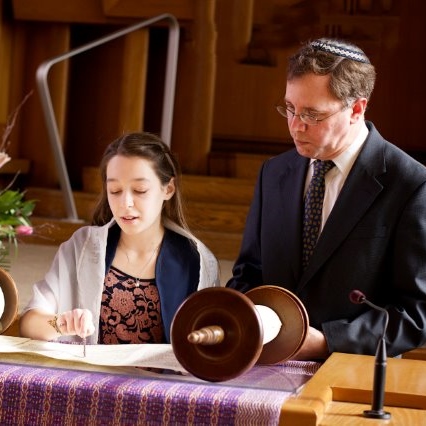click to dowload our latest edition
CLICK HERE TO SUBSCRIBE TO OUR NEWSLETTER


Published
7 years agoon
By
adminBRIAN JOSS
While this is unheard of in South African Orthodox circles, it has become “a strong trend in the modern Orthodox world in America, Israel, England and Australia”, said a Johannesburg woman who prepares boys and girls for this milestone and who asked not to be named.
In fact, so sensitive is this issue that most of the people asked for comment, including the batmitzvah girl herself, her family and the rebbetzin who taught her, have asked not to be identified.
However, Dina Brawer, founder of the Jewish Orthodox Female Alliance (JOFA) in the United Kingdom, said more families have in the last three years chosen to celebrate their daughters’ b’not mitzvah in a way that includes an element of ritual (not limited to Torah reading), such as havdalah or by reading a megillah.
The mother of the Cape Town batmitzvah told Jewish Report she had been thinking about her daughter’s batmitzvah for a long time. When she suggested to her rabbi how she thought it could be done, she said he did not agree to the daughter leyning “on our Sea Point Shul premises”, even at a women-only service in the shul hall.
A woman had never leyned before at an Orthodox minyan in Cape Town, so the mother investigated the concept of hosting a halachic minchah service with a Torah reading led by women. “Dina (Brawer) was an invaluable resource.
“On the Shabbat morning, my daughter delivered a dvar torah from the front of a packed Sea Point Shul. It was important to us to celebrate with our shul community and not to separate ourselves from them, and so we sponsored a kiddush bracha.”
On the afternoon of Shabbat chol hamoed succot, about 200 people (including members of the shul) congregated at an overflowing house used as an office by the Union of Jewish Women. The Torah service was led and run entirely by women.
“My daughter leyned with such confidence and pride that many a tear was shed.
“The obstacles we faced when trying to conceptualise the batmitzvah, created the opportunity to find a creative and satisfying solution. After the service we went to our home for a seudah shlishit (third meal) and our daughter led havdalah as Shabbat came out,” the mother said.
Brawer guided the batmitzvah and her family in choosing a hall rather than a shul to have the ceremony, where they used a privately-borrowed sefer Torah and the mechitzah was made of balloons.
Dr Deborah Weissman, a specialist in Jewish education who has had extensive experience in teacher training, religious feminism, interfaith teaching and dialogue, said her Kehillat Yedidya congregation in Jerusalem has been organising women’s Torah readings, including for b’not mitzvah, for almost 40 years, mainly for members and their families.
“I doubt that we want to do this kind of thing very often, but are willing to give advice to others, who do,” she explained.
“Since we are an independent congregation, we have not had trouble from any rabbinic authorities over what we do. Although we were the pioneers, it’s quite common in Israel now for girls within the modern Orthodox community to celebrate their batmitzvah by reading from the Torah,” said Weissman.
It took the Cape Town mother a long time to find someone who was prepared to teach her daughter, and eventually found a rebbetzin to do it.
The rebbetzin, who didn’t believe this was becoming a trend in Cape Town, said: “Although I do believe there are more girls and families who find this appealing and would consider it an option, the push-back from the rabbis and rebbetzens, although subtle, is clear and unwavering: they did not approve,” she said.
“But I think it is a good idea. There are so many changes that are taking place within the Jewish community about the status of women. Since this is not a question of clear prohibition but rather communal integrity, the rabbinic leadership should consider it.
The desire for this is not emanating from irreligious women, but rather religious women seeking greater fulfilment in areas where halacha is not clearly broken.
“Some people are reluctant to discuss this, as they and even some women, find it strange as it’s not something their bobbes would have done. Others know the opinion of the rabbinic fraternity and will not question it,” said the rebbetzen, who has not taught this to any other girls.
The batmitzvah’s mother said it was important that her daughter was taught by an observant Orthodox woman, “both to make the circle bigger and as a role model and so my daughter did not feel like we were moving out of what is acceptable”.
The mother said: “I asked Dina (Brawer) a number of questions on how to run a women-led Torah service in a halachically appropriate way.
“I asked how we could change over from a male-led mincha service to a women-led Torah service.
“I know of many girls in the Progressive movements who have had the same kind of batmitzvah; many led the service and leyned, as well as unaffiliated young women. However, I don’t know of anyone identifying as Orthodox who has done this before or since,” said the mom.
